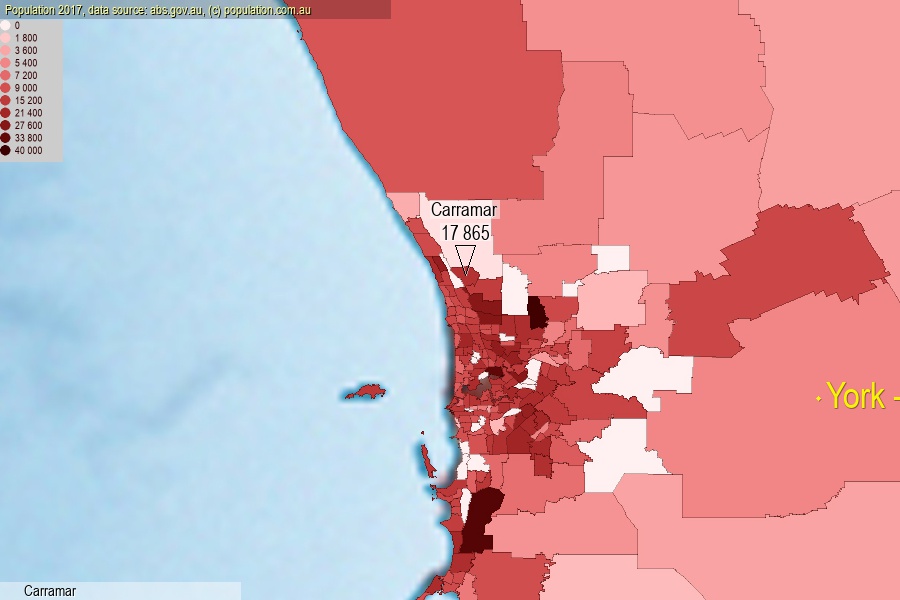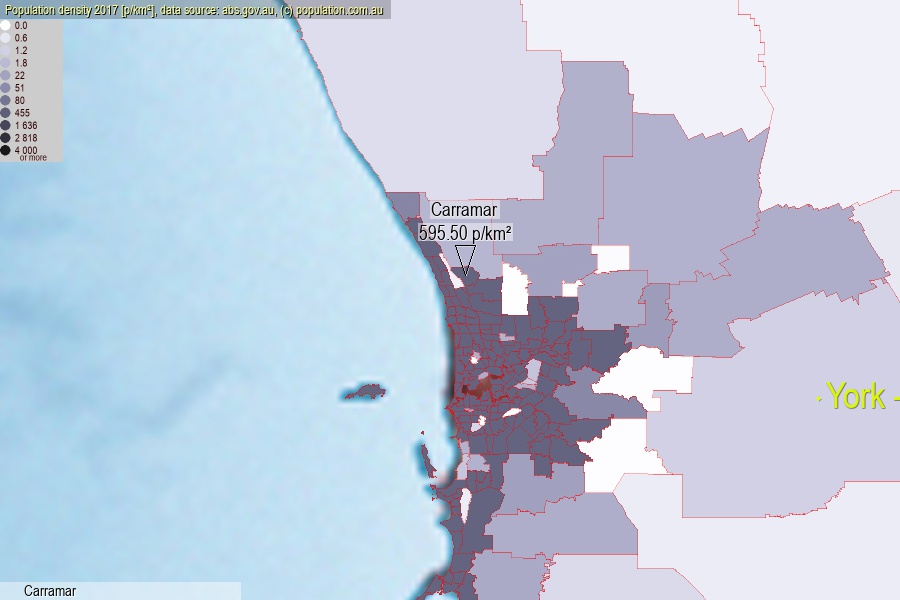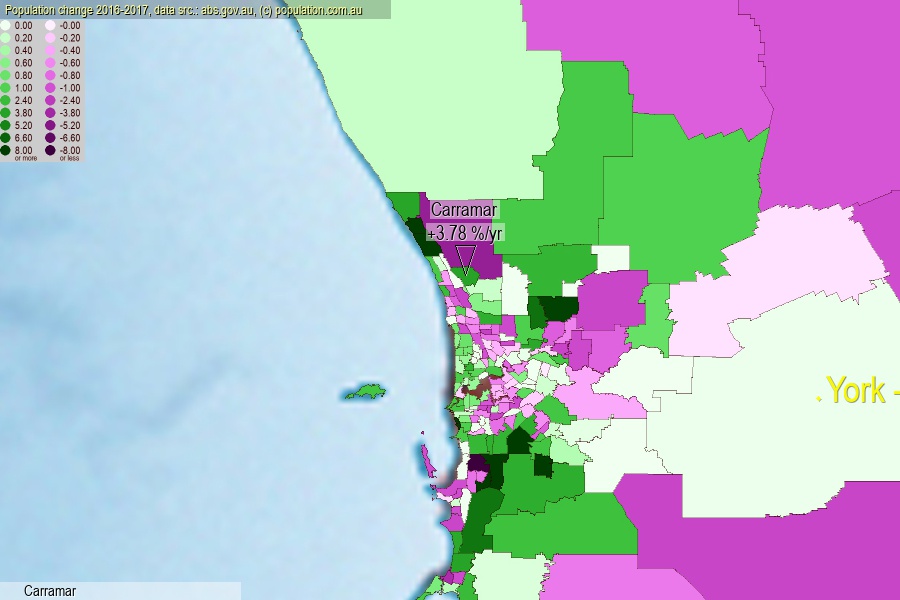 population.com.au
population.com.auLast official estimated population of Carramar (as Statistical Area Level 2) was 17 865 people (on 2017-06-30)[2]. This was 0.07% of total Australian population and 0.689% of WA population. Area of Carramar is 30.00 km², in this year population density was 595.50 p/km² . If population growth rate would be same as in period 2016-2017 (+3.78%/yr), Carramar population in 2025 would be 24 042. [0]



Click to enlarge. Carramar is located in the center of the images.
Population [people], population density [p./km²] and population change [%/year] [2]
View borders » (new window) [4]
[1991-1992] +89.33 %/Yr.
[1992-1993] +48.77 %/Yr.
[1993-1994] +32.43 %/Yr.
[1994-1995] +17.52 %/Yr.
[1995-1996] +22.59 %/Yr.
[1996-1997] +27.85 %/Yr.
[1997-1998] +18.00 %/Yr.
[1998-1999] +18.63 %/Yr.
[1999-2000] +18.79 %/Yr.
[2000-2001] +13.71 %/Yr.
[2001-2002] +17.99 %/Yr.
[2002-2003] +11.74 %/Yr.
[2003-2004] +11.39 %/Yr.
[2004-2005] +12.14 %/Yr.
[2005-2006] +11.47 %/Yr.
[2006-2007] +11.70 %/Yr.
[2007-2008] +9.66 %/Yr.
[2008-2009] +11.62 %/Yr.
[2009-2010] +9.92 %/Yr.
[2010-2011] +10.05 %/Yr.
[2011-2012] +10.94 %/Yr.
[2012-2013] +9.40 %/Yr.
[2013-2014] +7.49 %/Yr.
[2014-2015] +6.09 %/Yr.
[2015-2016] +5.12 %/Yr.
[2016-2017] +3.78 %/Yr.
[0] Calculated with linear interpolation from officially estimated population
[1] Read more about SA2 and Australian Statistical Geography Standard (ASGS) on abs.gov.au
[2] Population data from Australian Bureau of Statistics (Population and density: 2017; change: 2016-2017)
[3] Digital Boundaries: Australian Statistical Geography Standard (ASGS) 2016.
[4] Border coordinates are simplifyed using Ramer-Douglas-Peucker algorithm.